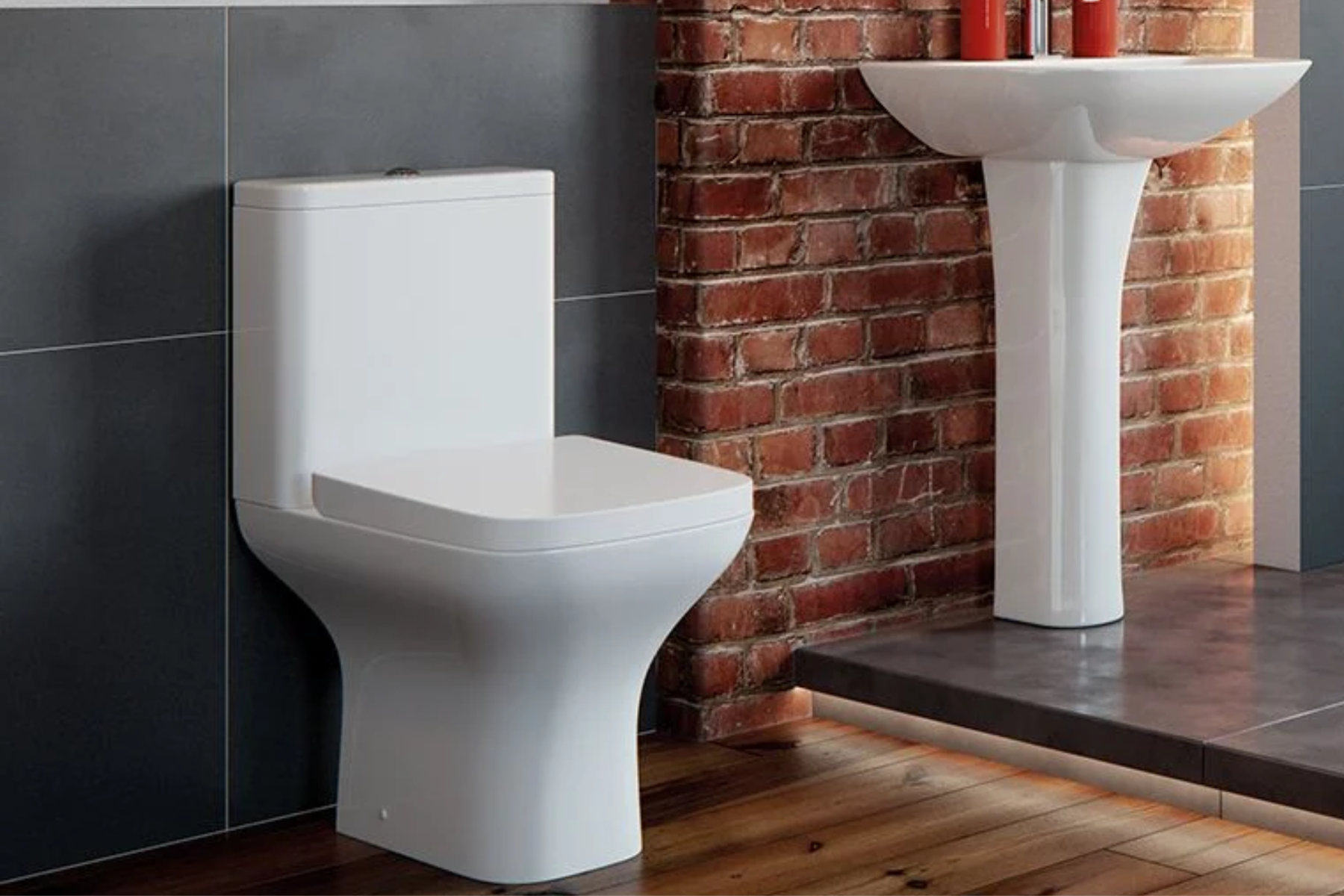For one reason or another, we have all experienced a blocked toilet or will do at least once in a lifetime. Your first thought might be to contact a plumber for an emergency call out, however, this can be quite costly and majority of the time isn’t necessary.
Firstly, you will need to try to diagnose the type of block and the cause. You will definitely know if you have a blocked toilet if the water level rises to the brim of the toilet pan when you flush. Another sign of a blocked toilet is if there is little to no water left in the toilet bowl after you flush.
The main cause of a blocked toilet is flushing items which are not suitable. Prevent toilet blockages by making sure you dispose of rubbish correctly. However, if it is already too late and you are faced with a blocked toilet, don’t panic!
We have listed various methods to help unblock your toilet, with or without a plunger. Keep reading to find out how to fix a clogged toilet with items such as a coat hanger, and baking soda.

How To Unblock A Toilet With A Plunger
Get Prepared
Before you grab your trusty plunger and get stuck into unblocking your toilet, you want to prepare yourself, and your area in case it gets messy.
If there is excessive water in your toilet bowl then transfer this into a bucket to reduce any unwanted splashes. Surround the area with old towels to keep your surfaces protected in the event of overflows.
We would recommend changing into old clothes as the last thing you want is to ruin your Sunday best while completing this task. Also, protect your hands with rubber gloves.
Plunge
Once you are well prepared, it’s time to get down to plunging.
Securely cover the outlet in your toilet bowl, and make sure there are no gaps for water or air to travel through. Gently push downwards, and then pull up. It is important not to use too much force initially, as it could worsen the blockage.
Repeat the process, but gradually increase the pressure each time you repeat the motion. It can take some time, but after a few rounds of pushing and pulling, the water level should hopefully start to lower.
Be patient with the process, as the majority of the time a plunger will effectively unclog your toilet.
If you have tried using a plunger for around 15 minutes and you aren’t seeing any results, there are alternative methods you can try before calling a professional.
How To Unblock A Toilet Without A Plunger
If you’re stuck without a plunger or that method hasn’t worked there are other ways you can try to unblock a toilet.
Hot Water
If you catch a toilet blockage early and it’s only partially clogged, hot water and pressure can usually unclog it.
Make sure you remove any excess water by transferring it into a bowl, and turn off your toilet water supply.
Add some washing-up liquid into your toilet bowl and leave it for a few minutes, this will act as a lubricant to loosen the blockage.
Using hot water (not boiling!), pour 2-3 litres into this bowl. Make sure you do this fast enough to create a substantial amount of pressure, however be careful not to scald yourself from any splashes
The force from the water should hopefully dislodge the cause of the blockage and your water level should return to normal. Wait for 5-10 minutes before checking the water level, if the block has not fully dislodged then repeat the method.
Baking Soda
If water alone isn’t budging the blockage, then you might need to add a few additional products.
Baking soda is one of those versatile products we should always have at home. In addition to being a key ingredient for baking, it offers health benefits, is brilliant for removing tough stains, and is a cleaning staple - especially in the bathroom!
The reason why baking soda is considered such a staple product for the bathroom is due to its powerful cleaning properties, and it works wonders at unclogging drains.
Firstly remove any excess water in your toilet bowl, then pour a cup of baking soda into your toilet. Follow this with 2 cups of white vinegar to create a chemical reaction. Close your toilet lid and leave the chemical mixture to fizz away for 20-30 minutes.
When you check the water level, if the block has not dissolved then pour 2-3 litres of warm water into the bowl, using enough pressure to flush the blockage. Once your water levels have returned to normal, flush your toilet to remove any lingering foam.
Clothes Hanger
If the above methods don't work, then you should manually move the cause of clogged toilets. A Plunger or drain auger works best for this, a wire clothes hanger should also work.
Unwind your wire hanger until it is straight. Ideally, you want a plastic-coated hanger to prevent scratching your toilet. Push the wire into the clogged area and give it a good poke. The aim is to break down the clog until it becomes free and forces it down the waste pipe.
Once you feel you have successfully dislodged the block, flush your toilet to check the water levels return to normal.
How To Stop Toilet Blocking
Hopefully, you have successfully unclogged your toilet. If you are struggling to clear the blockage yourself, or if your toilet keeps clogging there could be a more serious underlying issue. If this is the case then we would recommend consulting a professional.
After successfully unblocking your toilet I’m sure you will have a big sigh of relief and will appreciate a functioning toilet. There are preventative measures you should take to reduce the chance of a blockage recurring.
We briefly touched on this before, but only flush items which are meant to go down the toilet. Never dispose of wet wipes, hygiene products, or cotton wool down the toilet. You should always keep your toilet lid closed when you aren’t using it to prevent any items from falling down the toilet, and creating a blockage.
Another main cause of clogged toilet drains is a build-up of toilet paper. Only using the required amount of toilet roll greatly eliminates the possibility of a clogged toilet.
Finally, the last preventative measure you can take is to keep your toilet clean. Regularly cleaning the inside of your toilet will reduce a build-up of toilet paper and limescale.
Even if you don’t currently have a blocked drain in your bathroom, it’s useful to know how to successfully clear your drains. Check out our blog post to learn how to unblock a sink without a plunger.

























